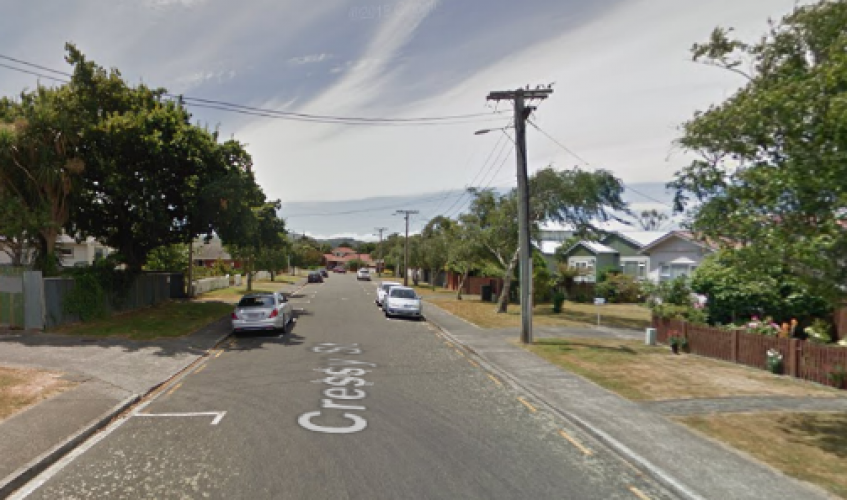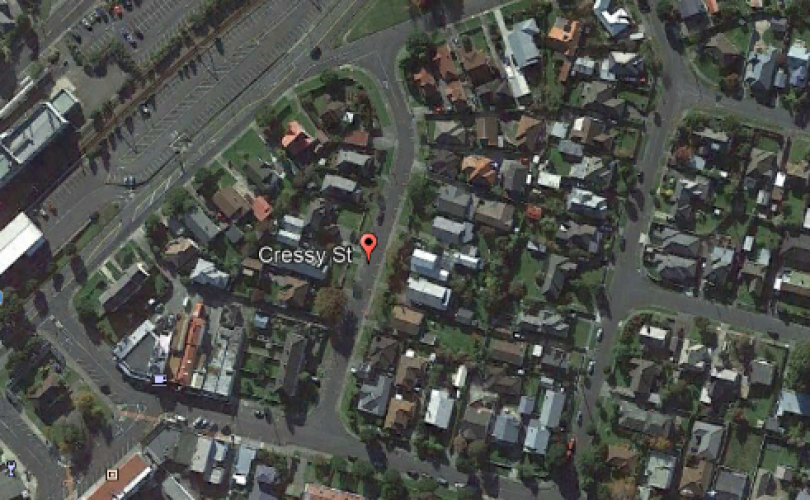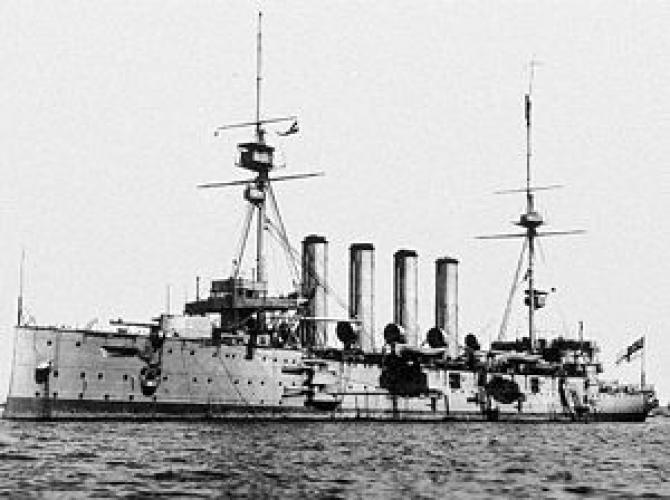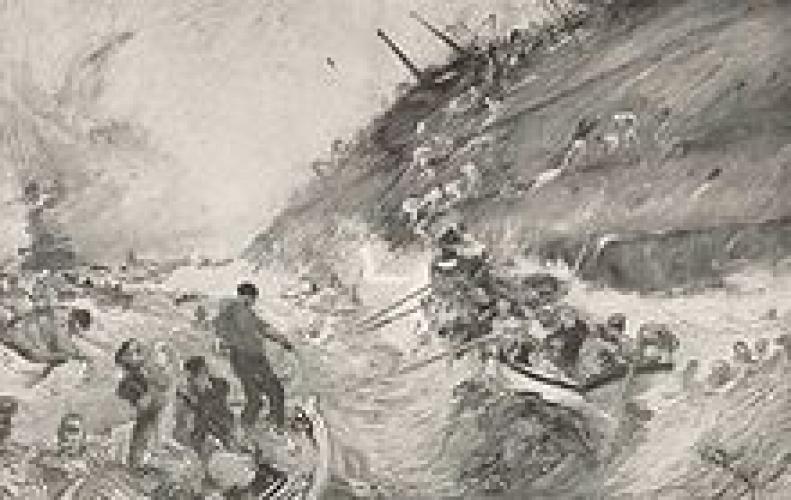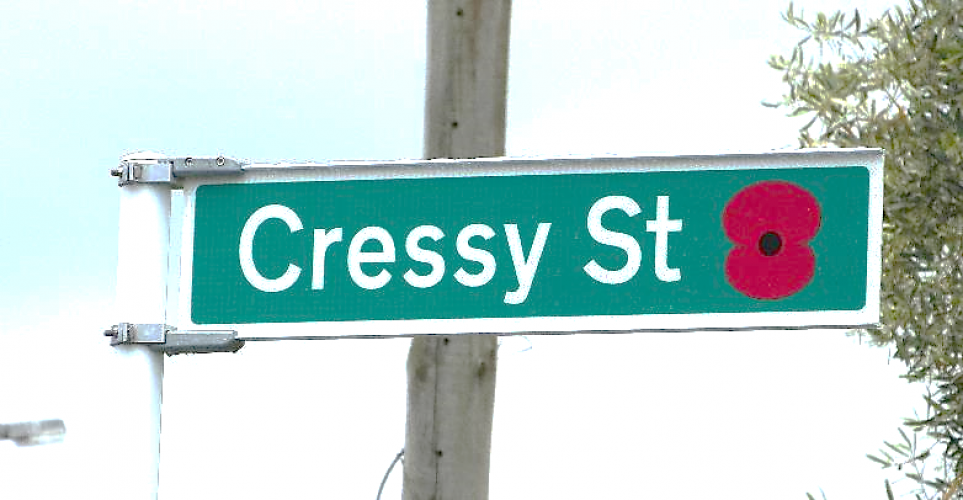160 Cressy Street Lower Hutt, street scene 2018
Reason for the name
This Waterloo Street was named in honour of HMS Cressy from World War 1.
HMS Cressy was a Cressy-class armoured cruiser built for the Royal Navy around 1900. Upon completion she was assigned to the China Station. In 1907 she was transferred to the North America and West Indies Station before being placed in reserve in 1909. Recommissioned at the start of World War I, she played a minor role in the Battle of Heligoland Bight a few weeks after the beginning of the war. Cressy, together with two of her sister ships, was torpedoed and sunk by the German submarine U-9 on 22 September 1914 with the loss of 560 of her crew. The connection to the New Zealand Navy is not clear however a significant loss of 560 sailors must have resonated throughout the empire.
Author: The Poppy Places Trust
Cressy, named after the 1346 Battle of Crécy, was laid down by Fairfield Shipbuilding at their shipyard in Govan, Scotland on 12 October 1898 and launched on 4 December 1899. After finishing her sea trials she passed into the fleet reserve at Portsmouth on 24 May 1901. She was commissioned by Captain Henry Tudor for service on the China Station on 28 May 1901, but her departure was delayed for several months when her steering gear broke down shortly after leaving the base and she had to return. She eventually left home waters in early October 1901, arriving at Colombo on 7 November, and then Singapore on 16 November. She was assigned to the North America and West Indies Station from 1907 through 1909 and placed in reserve upon her return home.
The ship was assigned to the 7th Cruiser Squadron shortly after the outbreak of World War I in August 1914. The squadron was tasked with patrolling the Broad Fourteens of the North Sea in support of a force of destroyers and submarines based at Harwich which protected the eastern end of the English Channel from German warships attempting to attack the supply route between England and France. During the Battle of Heligoland Bight on 28 August, the ship was part of Cruiser Force 'C', in reserve off the Dutch coast, and saw no action. After the battle, Rear Admiral Arthur Christian ordered Cressy to take aboard 165 unwounded German survivors from the badly damaged ships of Commodore Reginald Tyrwhitt's Harwich Force. Escorted by her sister Bacchante, she set sail for the Nore to unload their prisoners.
On the morning of 22 September, Cressy and her sisters, Aboukir and Hogue, were on patrol without any escorting destroyers as these had been forced to seek shelter from bad weather. The three sisters were steaming in line abreast about 2,000 yards (1,800 m) apart at a speed of 10 knots (19 km/h; 12 mph). They were not expecting submarine attack, but had lookouts posted and one gun manned on each side to attack any submarines sighted. The weather had moderated earlier that morning and Tyrwhitt was en route to reinforce the cruisers with eight destroyers.
U-9, commanded by Kapitänleutnant Otto Weddigen, had been ordered to attack British transports at Ostend, but had been forced to dive and take shelter from the storm. On surfacing, she spotted the British ships and moved to attack. She fired one torpedo at 06:20 at Aboukir which struck her on the starboard side; the ship's captain thought he had struck a mine and ordered the other two ships to close to transfer his wounded men. Aboukir quickly began listing and capsized around 06:55 despite counter flooding compartments on the opposite side to right her.
As Hogue approached her sinking sister, her captain, Wilmot Nicholson, realized that it had been a submarine attack and signalled Cressy to look for a periscope although his ship continued to close on Aboukir as her crew threw overboard anything that would float to aid the survivors in the water. Having stopped and lowered all her boats, Hogue was struck by two torpedoes around 06:55. The sudden weight loss of the two torpedoes caused U-9 to broach the surface and Hogue's gunners opened fire without effect before the submarine could submerge again. The cruiser capsized about ten minutes after being torpedoed and sank at 07:15.
Cressy attempted to ram the submarine, but did not succeed and resumed her rescue efforts until she too was torpedoed at 07:20. Weddigen had fired two torpedoes from his stern tubes, but only one hit. U-9 had to manoeuvre to bring her bow around with her last torpedo and fired it at a range of about 550 yards (500 m) at 07:30. The torpedo struck on the port side and ruptured several boilers, scalding the men in the compartment. As her sisters had done, Cressy took on a heavy list and then capsized before sinking at 07:55. Several Dutch ships began rescuing survivors at 08:30 and were joined by British fishing trawlers before Tyrwhitt and his ships arrived at 10:45. From all three ships 837 men were rescued and 62 officers and 1,397 enlisted men lost: 560 of those lost were from Cressy.


